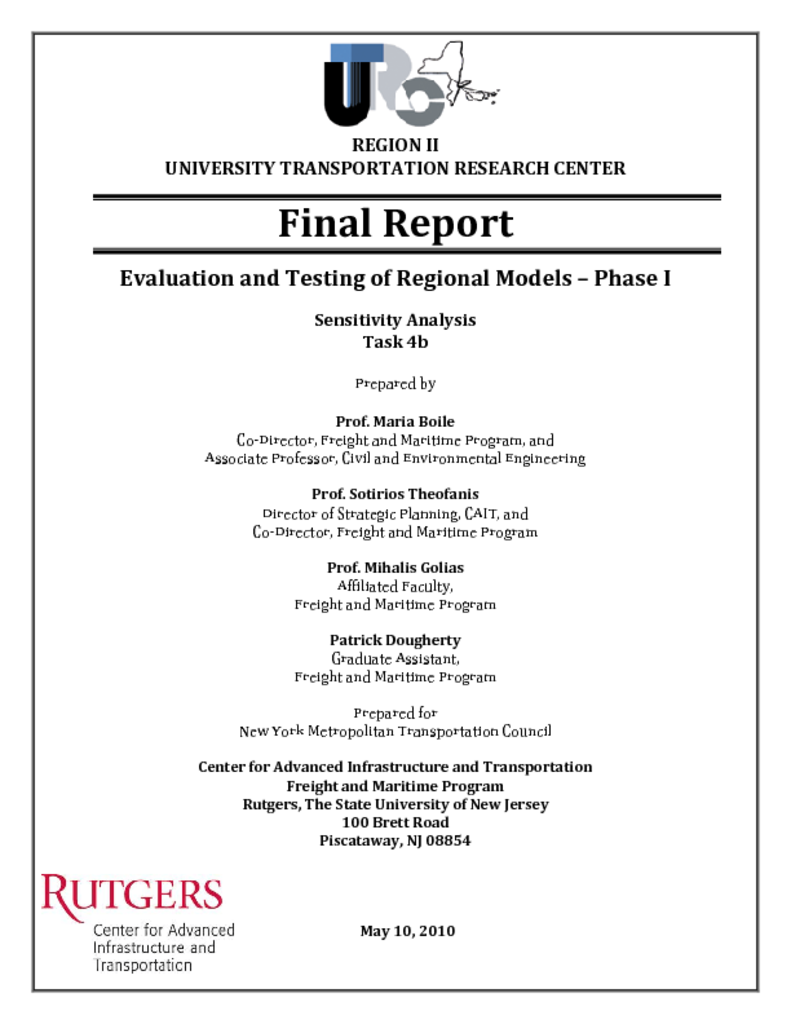<p>New York Metropolitan Transportation Council (NYMTC), an association of governments, transportation providers, and environmental organizations, handles the metropolitan transport ation planning throughout New York City, Long Island and the Lower Hudson Valley. In the early 1990s, NYMTC developed a transportation model, the New York Best Practices Model (NYBPM), in response to federal regulations on surface planning, specifically the Intermodal Surface Transportation Efficiency Act (ISTEA) and the Clean Air Act (CAA). The NYBPM was created to analyze adjusting traffic patterns due to changes within demographic agendas and other changes in transportation systems in the area, and has become a very valuable tool to planners. The purpose of the work presented in this report is to test and demonstrate the capabilities of NYMTC's Best Practices Model for policy analysis in the New York Metropolitan Region, through peer reviewed sensitivity analysis. The scenarios that were selected for this set of sensitivity tests examine and demonstrate the utility of the NYBPM as a tool for policy analysis by looking at a detailed level at how the model responds to network or policy changes. The first scenario that was tested (B1) showed the impact of truck demand changes on the network. The purpose of testing this scenario was to show the zonal and link-level effects on passenger travel on the major corridors into Manhattan as the level of traffic rises on the network. The second scenario that was tested (B2) showed the impact of tolling policy changes on a major link of the network. For this scenario several changes in tolling policies on the Verrazano-Narrows Bridge were tested and the impacts these changes had on other NYC crossings were analyzed. The third scenario that was tested (B3) showed the impacts of a disruption of infrastructure on the network. This scenario tests how travel choices change at the facility level if the capacity of a bridge is reduced due to construction, maintenance, or unplanned events.</p>




